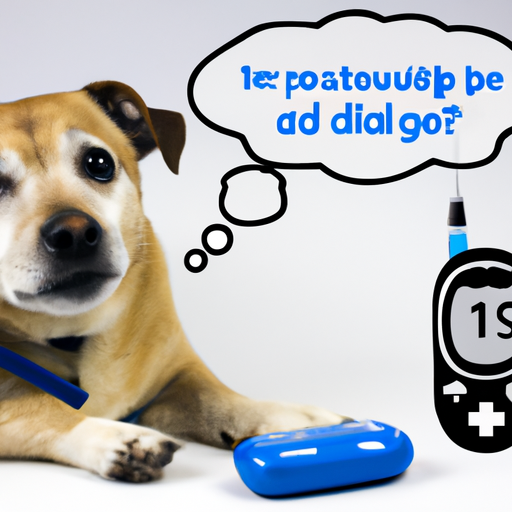When it comes to our furry friends, their wellbeing is a top priority. Just like humans, dogs can develop various health conditions, including diabetes. This piece will delve into the symptoms of canine diabetes to better equip you, a caregiver, with the knowledge required to recognize any potential warning signs early. Let’s start by understanding what canine diabetes is.
What is Canine Diabetes?
Canine diabetes is a chronic disease that affects the pancreas’ ability to produce insulin, the hormone that helps regulate blood sugar levels. When a dog has diabetes, their body either doesn’t make enough insulin or can’t use it effectively, leading to high blood sugar levels.
Common Symptoms of Canine Diabetes
Every dog is unique, and the symptoms can vary from one to another. However, some common symptoms should raise a red flag. These include:
- Excessive Thirst: Dogs with diabetes often drink more water than usual.
- Increased Urination: As a result of excessive drinking, you may notice your dog urinating more frequently.
- Unexpected Weight Loss: Despite eating regularly, your dog might start losing weight unexpectedly.
- Increased Appetite: Dogs with diabetes often feel hungrier and may start eating more.
- Lethargy: You might observe your dog being less active or seeming overly tired.
- Cloudy Eyes: In some cases, dogs with diabetes may develop cataracts, making their eyes appear cloudy.
Risk Factors for Canine Diabetes
Understanding the risk factors associated with canine diabetes can help you take preventive measures. Some common risk factors include:
- Age: Dogs older than seven years are more likely to develop diabetes.
- Breed: Certain breeds like Samoyeds and Miniature Schnauzers have a higher risk.
- Weight: Overweight or obese dogs are at a higher risk.
- Sex: Female dogs are twice as likely to develop diabetes as males.
| Risk Factor | Explanation |
|---|---|
| Age | Dogs older than seven years |
| Breed | Samoyeds, Miniature Schnauzers |
| Weight | Overweight or obese dogs |
| Sex | Female dogs |
Diagnosis of Canine Diabetes
If your dog shows any symptoms associated with diabetes, it’s crucial to consult a vet immediately. The vet will conduct a physical examination and may perform blood and urine tests to confirm the diagnosis.
Treatment and Management
While there’s no cure for canine diabetes, it can be managed with a combination of diet, exercise, and insulin therapy. Regular vet check-ups are essential to monitor your dog’s condition and adjust treatment as necessary.
Living with a Diabetic Dog
Living with a diabetic dog might seem daunting, but with careful management, your dog can lead a normal, happy life. Regular exercise, a balanced diet, and close monitoring of your dog’s symptoms can help manage the condition.
Frequently Asked Questions (FAQs)
1. Can my dog live a normal life with diabetes?
Yes, with careful monitoring and treatment, dogs with diabetes can lead a normal life.
2. What should I do if I suspect my dog has diabetes?
If your dog exhibits any symptoms associated with diabetes, you should immediately consult a vet.
3. Can canine diabetes be cured?
While there’s no cure for canine diabetes, it can be managed effectively with the right treatment and care.
4. Can diet and exercise prevent canine diabetes?
While diet and exercise can’t guarantee prevention, they can significantly reduce the risk and help manage the condition if your dog has been diagnosed with diabetes.
5. How often should a diabetic dog be fed?
Typically, diabetic dogs should be fed the same amount of food at the same time every day to keep blood sugar levels consistent.
Remember, early detection and intervention can make a big difference in managing canine diabetes. Being aware of these symptoms and acting promptly can help ensure your furry friend lives a long, healthy life.



